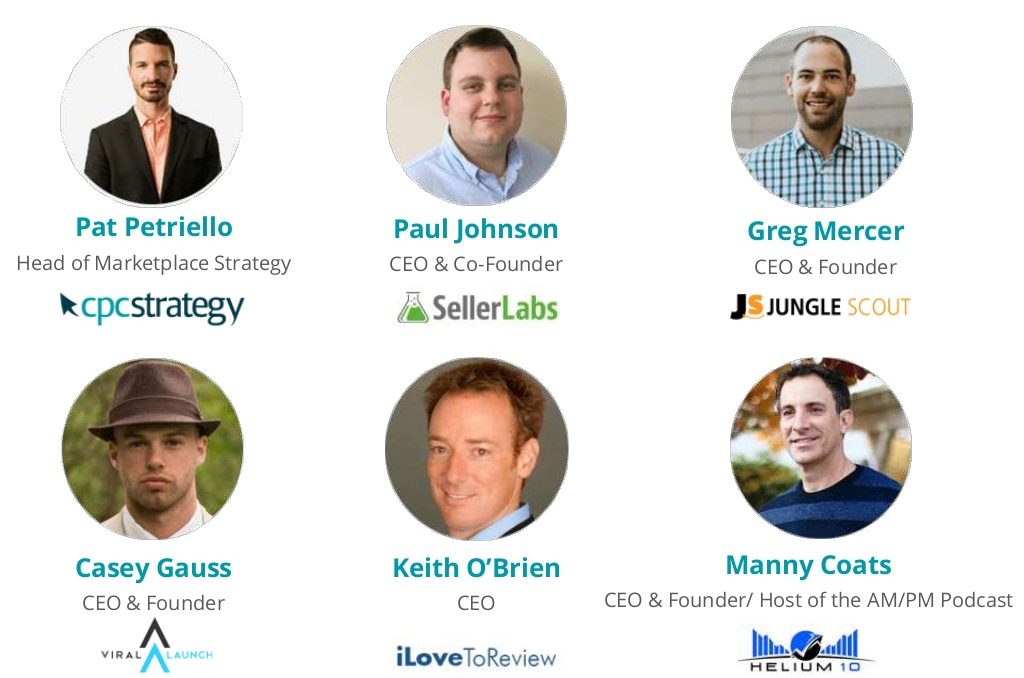How Can Sellers Succeed Without Incentivized Reviews on Amazon?

Amazon has a reputation for making swift changes to their TOS, and this past year has been especially full of them–from Amazon’s brand gating enforcement to the most recent “incentivized review” ban.
Let’s talk about the latest one–the incentivized review ban. What’s going to happen now that sellers can no longer give away or discount products in exchange for a review?
Pat Petriello, Head of Marketplace Strategy, hosted an emergency press conference on that topic this week, featuring 5 experts who broke down how Amazon’s new review policy will impact sellers.
We also consulted another in-house Amazon expert, Jeff Coleman, the VP of Marketplace Channels at CPC Strategy, to get a better handle on how sellers can adapt in a post-incentivized-review world.

O’Brien: When your customer loses trust with you, all things start to unravel. [At iLoveToReview], we would literally have people come over from other platforms and say, “Well, I’m going to get all four- and five-star reviews, right? And we’d say, “I don’t know, how good is your product?” So that’s a real issue. Because you are not only just losing trust, you’re also…misleading the public if you’re driving four and five-star reviews to a subpar product. So that’s a real issue. Because you are not only just losing trust, you’re also…misleading the public if you’re driving four and five-star reviews to a subpar product.
Johnson: [ReviewMeta] used the word “incentivized review”…and basically, that ReviewMeta story caught on, and all of these other news agencies started picking it up and getting more and more response[s]. So Amazon was having a PR nightmare because ReviewMeta was exposing this thing…that was pretty bad press for them, and I probably would have done the same thing as Amazon.
Petriello: Success to Amazon is not a silver bullet; it’s not a hack. It’s not something you can do to trick Amazon’s system. At the end of the day, if you don’t have high-quality products as a brand manufacturer or a private labeler, or even as a reseller–you’re not going to have long-term sustainable success on the platform. And that’s probably a good thing. If there’s ways to hack the system so that poor quality or low-quality products can…artificially rank well on Amazon’s search page, that’s not a good experience, and ultimately, it’s bad for Amazon and bad for the Amazon shopper.
Gauss: I was actually kind of surprised, because–with the way that Amazon was factoring in the star rating, I thought they had kind of taken care of reviews from discounted sales playing into ratings…a lot of times is that Amazon is very highly weighting the Verified Purchase Reviews. It’s not like a product that would normally getting a three star is getting four-and-a-half star because of these incentivized reviews…they’re actually getting a pretty accurate star rating for that. But it comes down to the customer perception–they’re not seeing that the star rating is…still valid; or at least pretty close to valid.
https://tinuiti.com/blog/2016/09/verified-purchase-reviews/
Gauss: The only thing that really changed was Amazon saying that you cannot say it’s given away at a discount in exchange for a review…but even before that, it was always our interpretation that the process that was common around that was always wrong. If you’re giving a product away and you say that you cannot get any more products until you leave a review you’re automatically putting some kind of compensation in place for the customer to leave a review.
Mercer: In the big scheme of things, it’s not that big of a deal. It’s still very easy to have success on Amazon if you have a high-quality product and everything else is good. Sellers are going to have to be a little more creative and put a little more work towards their listings and their email services asking for follow up or reviews…it may take a little more time to launch a product, and you might have to offer it at a little bit of a discount, but overall, I don’t think it’s that big of a deal.
Johnson: You can still get sales without reviews, you just have to spend more money on marketing. So it will be more expensive to launch a product because you’re going to have run Sponsored Product ads, and you’re going to have to get your item featured on a deals website or something like that, or you’re going to have to do your own Facebook campaign…the idea is you’re just trying to drive sales velocity, and you’re still going to get reviews from that. The overall marketing tool chest has to grow, and sellers are going to have to look at lots of different options to drive sales velocity to their products. And after you get sales…[you] can follow up with good customer service…and if you want to ask for a review, do it in a polite, non-spammy way.Your communication with the buyer should always be about a great customer experience first, and secondly, you can ask for a product review….market unto others as you would be marketed to.
Coats: I think that having your listing absolutely optimized in every way today is more important than ever. When I say optimized, I’m talking about everything…in my opinion, the images are the number one thing. Every image has to be perfect–you can’t have one image in there that’s not as good..you [also] have to make sure you’re absolutely optimized for keywords…we’re finding that every keyword and keyword phrase in your title is ultra important.
https://tinuiti.com/blog/2016/09/how-to-optimize-amazon-product-images/
Coleman: Vine is a good way to get a small number of reviews to start. The unfortunate thing is that third-party sellers don’t have access to that right now. The sooner Amazon opens that up, the sooner it becomes a fair playing field for everybody.
https://tinuiti.com/blog/2015/10/amazon-vine-program/
O’Brien: It’s really about doing the things that you know are right in the first place. The Amazon rush can cause people to make short-term decisions about business. Don’t put something in the marketplace that you think is valuable. Start off and build a product you would be proud to use in your own home–in your own life. And not just that’s OK–build something really awesome. The world has way too much [crap] in it already–just build something cool. And start there…let’s just do it right; let’s build strong business practices and invest in learning what really works…I think specifically, also, it’s really time for sellers to look at diversifying, not just outside of Amazon, but certainly across Amazon [global] platforms.
Petriello: Amazon is not this static entity where you can set and forget a strategy…that ecosystem will continue to change, and a year from now, we’ll be having a different webinar about how Amazon’s policy has changed or a new tool is out, and we’ll all need to adapt to that, and this is really no different.
